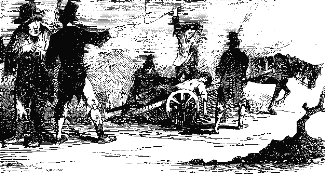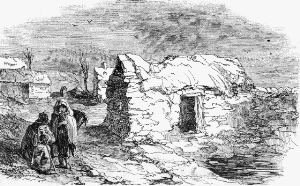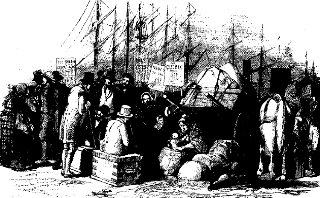The Tara Players Theater Company also ran the play 'Like the Sun' on August 14,15, and 16 at Folklorama and again on September 8 as a fundraiser for Winnipeg Harvest.

The potato is considered somthing of an Irish national vegetable; and in fact, it was once virtually the only food eaten by poor people in Ireland. It is no exaggeration to say the potato has helped shape the course of Irish History.
It was introduced to Ireland in
the 17th century, and it seemed the ideal crop. It was nutrious, easy to
grow and a small plot could produce a high yield; six tons to an acre!
But 150 years ago, a mysterious blight attacked crops throughout Ireland and a whole segment of the population who depended upon the potato was either wiped out or forced to emigrate. During the next five years, more than a million people died of starvation or from diseases associated with malnutrition. As many as two million more emigrated; many of them to North Amercia. It wasn't until many years afterward that a means was found to control the potato blight.

Some effort were made by the British government (which ruled all Ireland at that time) to combat the problem, but they were relatively ineffective. Worse yet, under economic doctrine of the time, it was felt that interference with market forces of supply and demand would only make matters worse. In the temper of those times, charity was not a mojor factor when politicians mde decisions.
The Great Famine still colors Irish perceptions. Much of our cultural, social and political fabric is shaped by lessons learned through that terrible tragedy

In the St. Lawrence River near Quebec
City lies an island of death; Grosse Isle. Many Irish people who fled the
potato famine found their final rest here. It is belived as many as 20,000
are buried on Grosse Isle. Many of them had died on the ships they depended
on for survival. During the Famine, the island was a quarantine station
for immigrants. In Irish eyes, the island became a major symbol of our
contribution to our new homeland. In 1909, a 140 foot Celtic cross was
erected there to commemorate the dead. In 1992, the Canadian government
began efforts aimed at making Grosse Isle a national park. The Irish-Canadian
community was outraged at the proposal, because it made almost no mention
of the islands's improtance to us. People of Irish descent throughout the
world rallied to have the plans changed. After many protests and public
hearings, Ottawa has agreed to alter its approach, so Canada's Irish community
now has a direct influence on how the final plans for Grosse Isle will
look. It means the island of death will become a tribute to the Irish who
rest there and to the Irish who rest there and to the immigrants who lived
to help make Canada the country it is today.